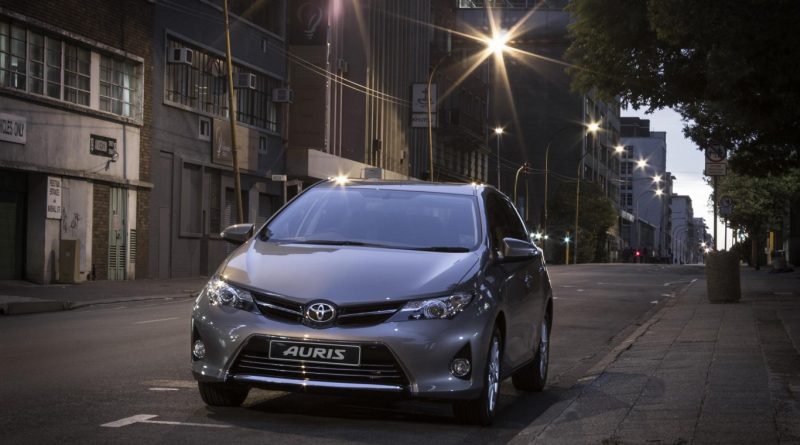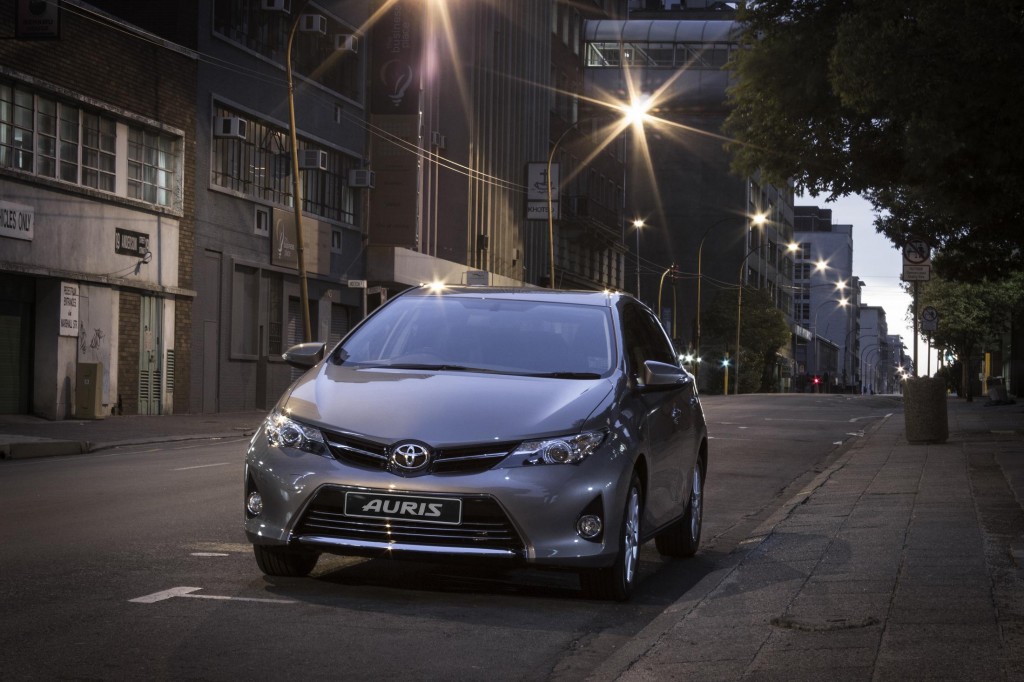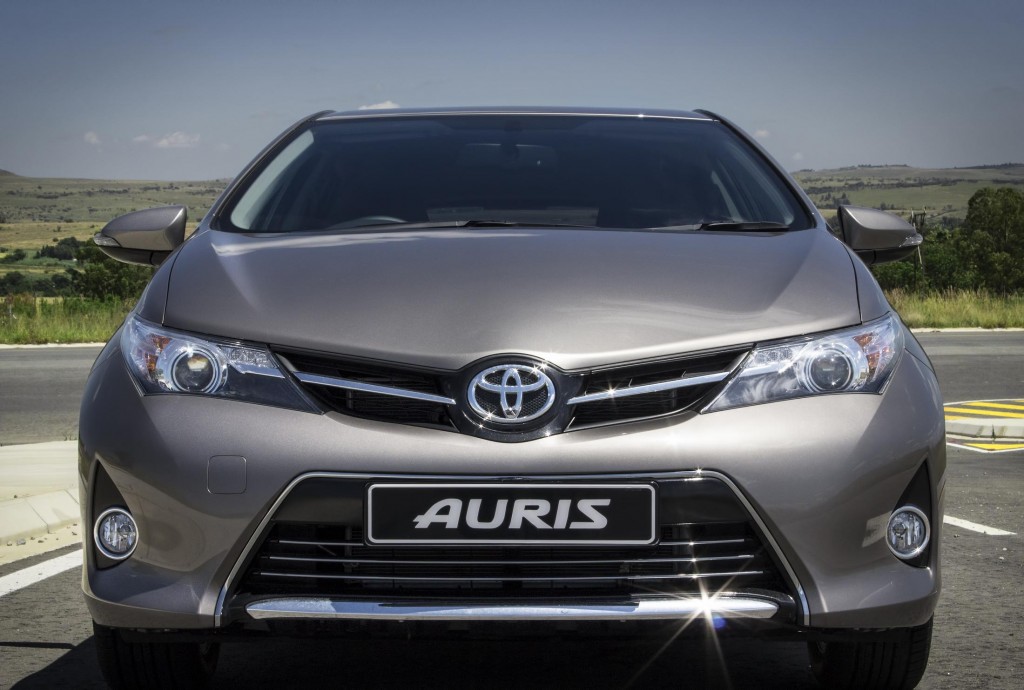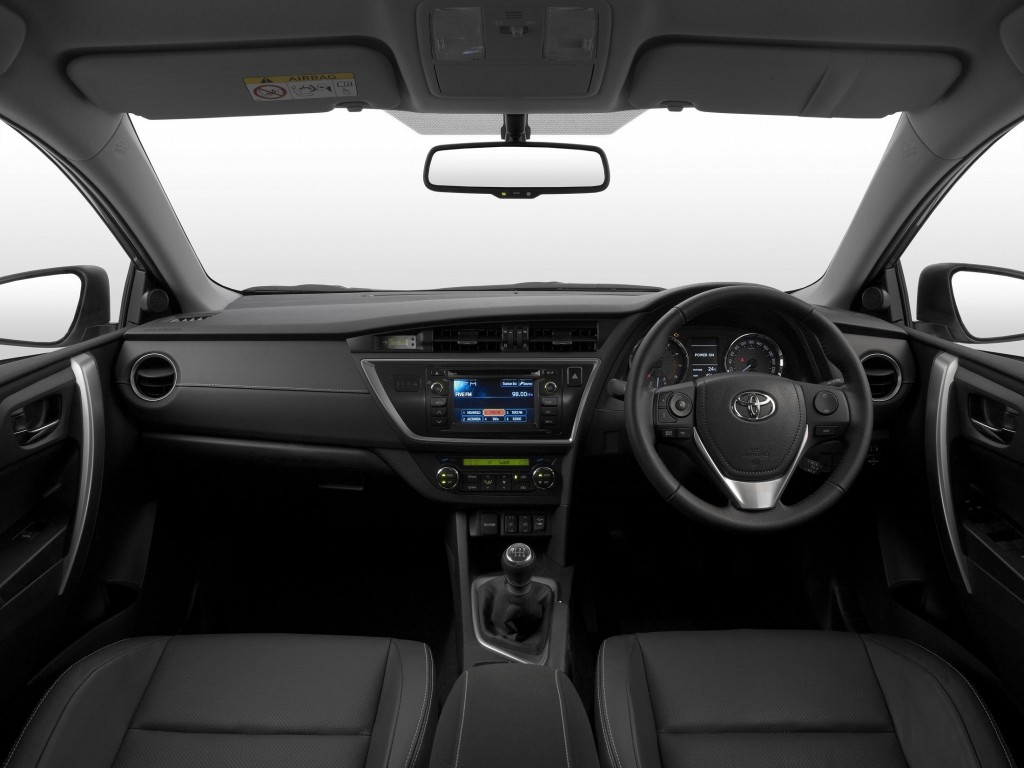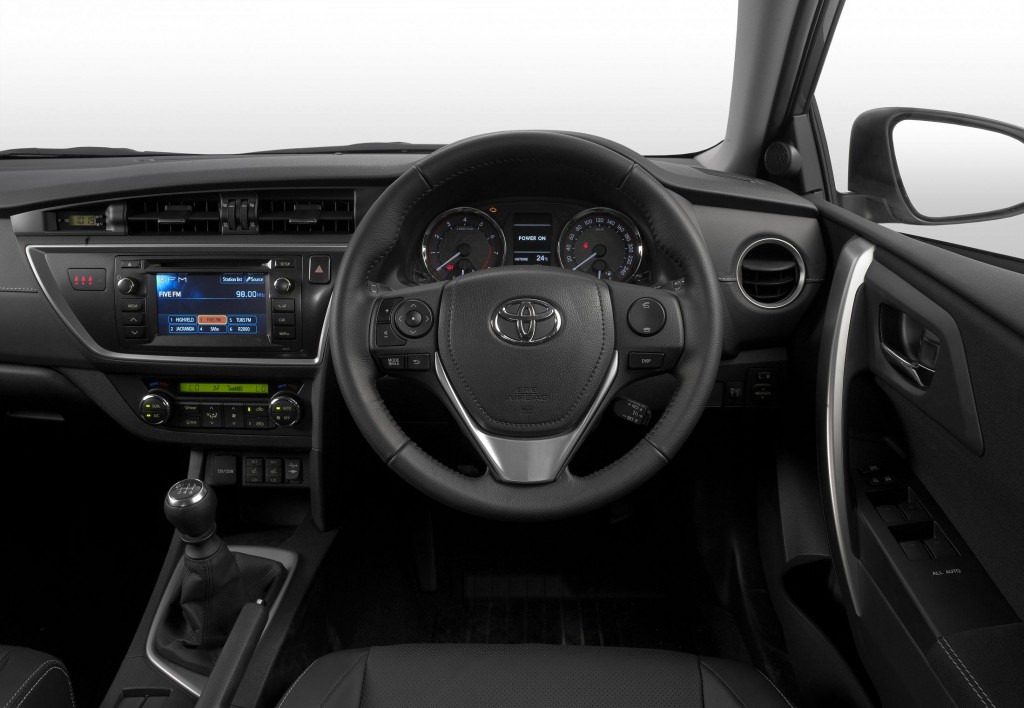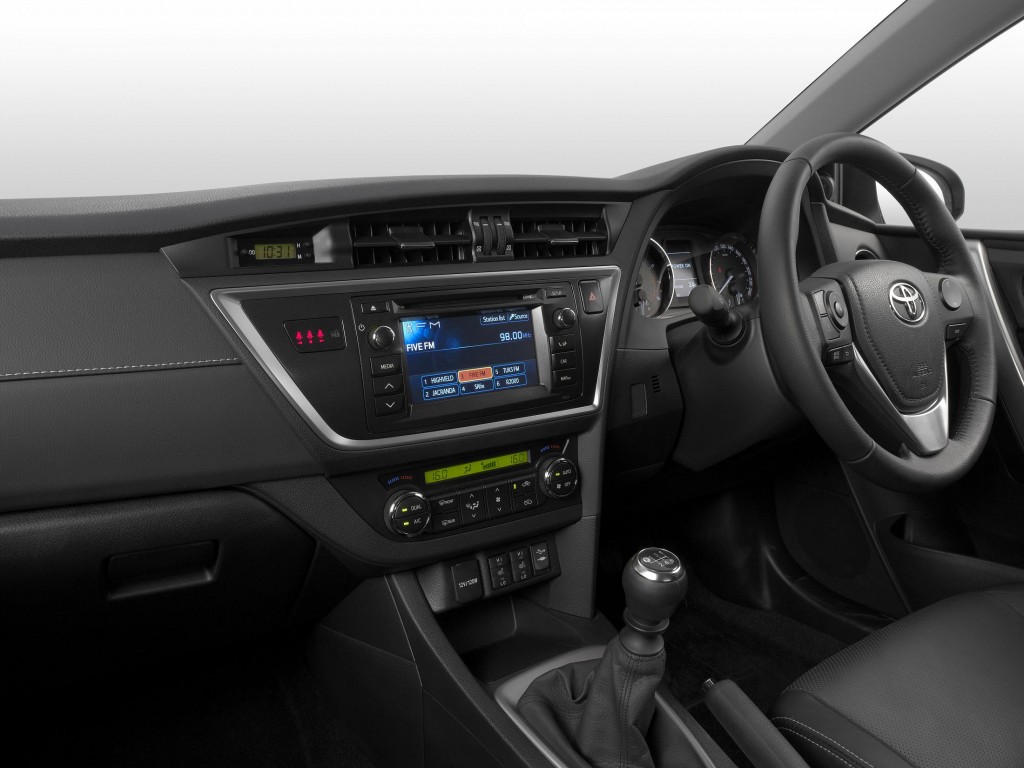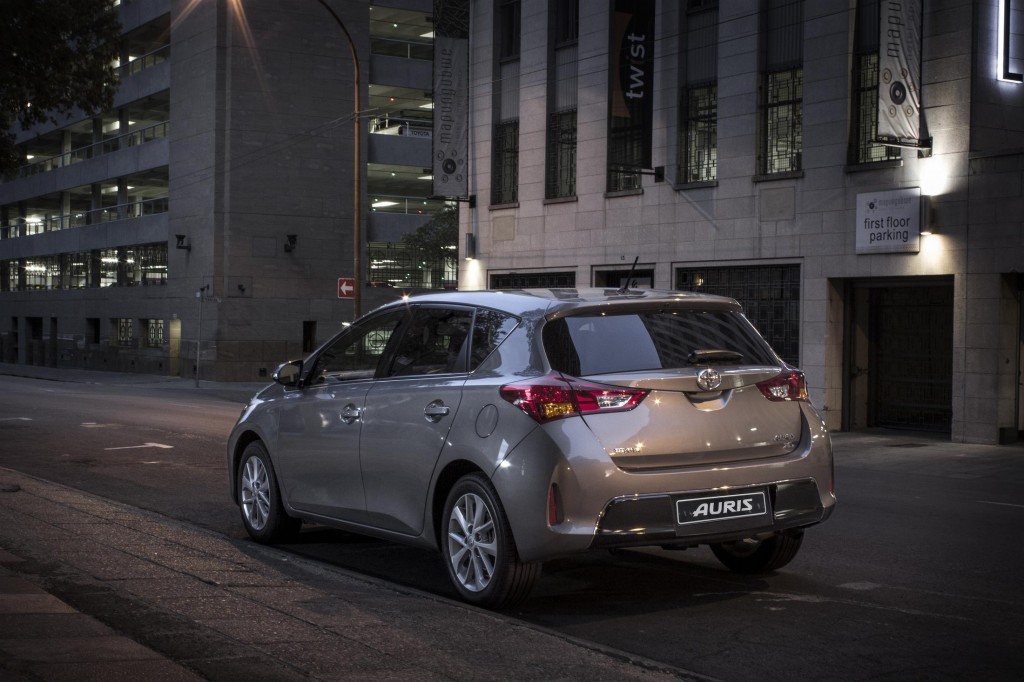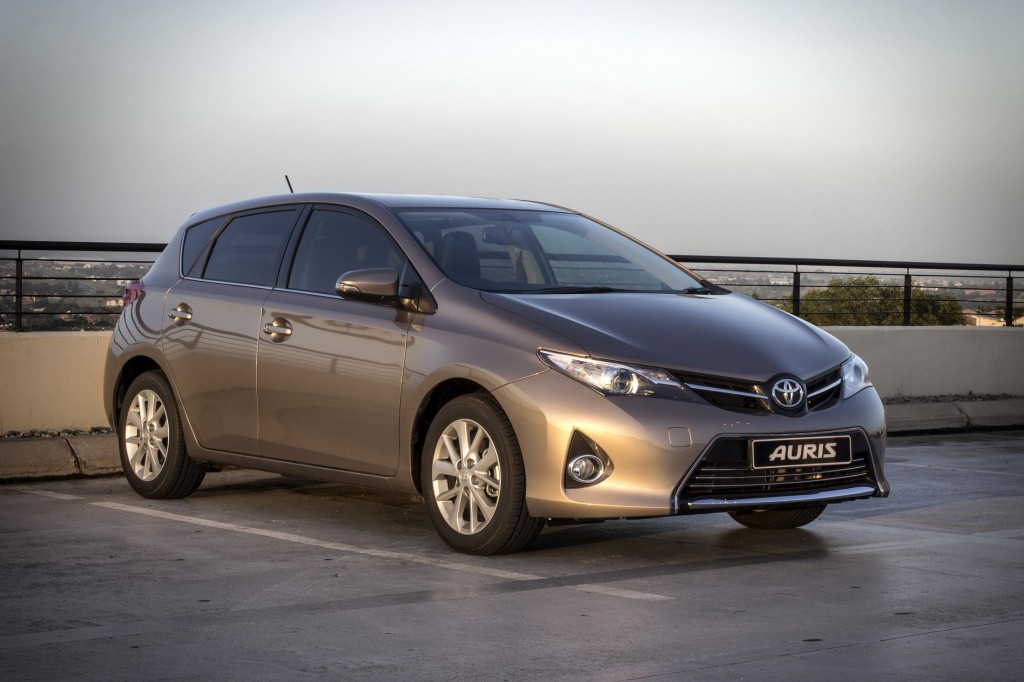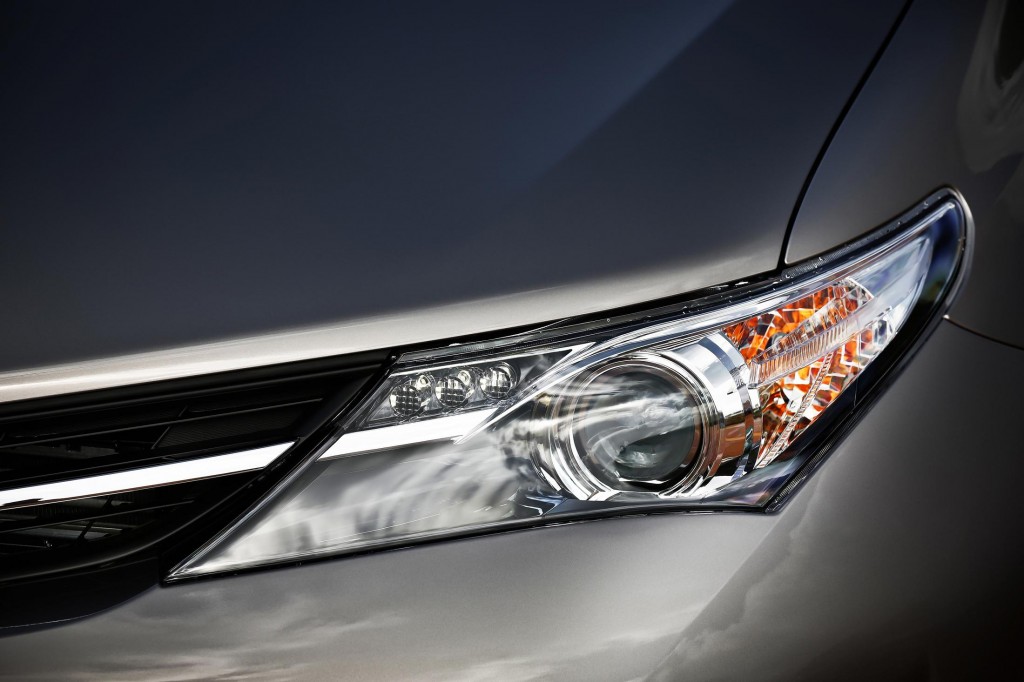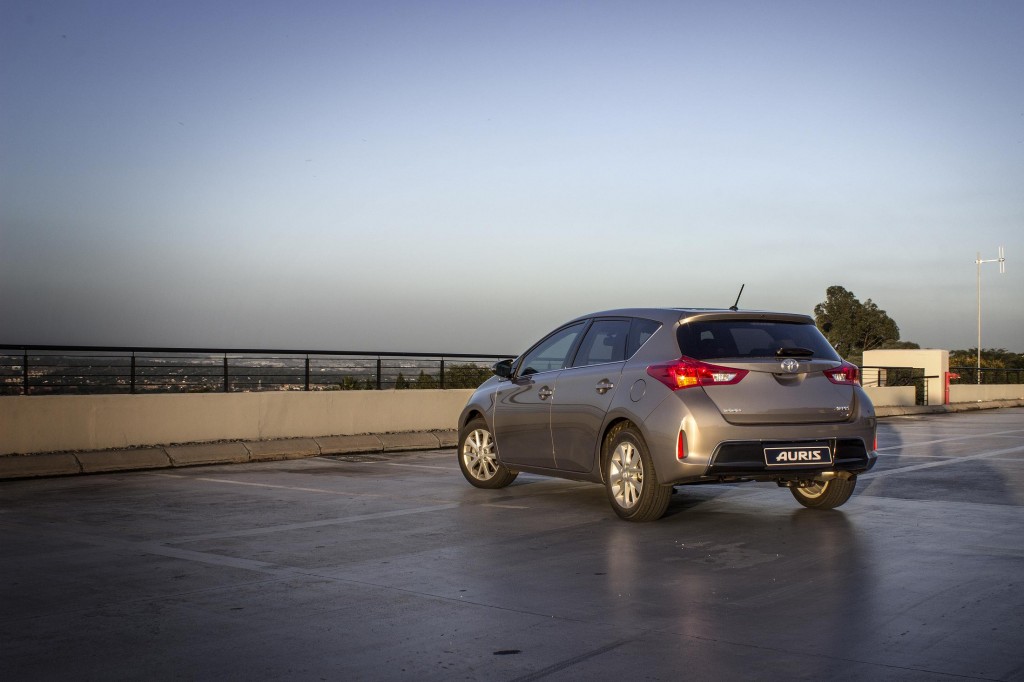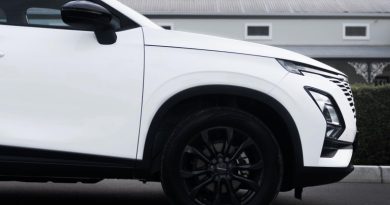The all-new Toyota Auris – prepare to be noticed
There’s a brand new spirit creeping into Toyota under the watchful tutelage of the company’s charismatic President and Chief Executive, Akio Toyoda. Committed to building cars that are more rewarding to drive while retaining their legendary build quality and reliability, his quest has been to provide drivers with a more engaging experience behind the wheel. This determination has already sired the brilliant new 86, so the engineers next set their sights on Toyota’s C-segment, mid-range hatch. The result? The bewitching, all-new, 2013 Auris – a car you can happily buy with your head as well as your heart.
According to Glenn Crompton, Vice President of Marketing, the changes to the all-new Auris are dramatic: “It now looks a lot sharper and more distinctive. It’s lower and visually has a more dynamic stance but the revisions are much more than just skin deep. The whole package is lighter, the handling and steering are sweeter thanks to tweaks to the suspension and electric power steering and the car generally feels more nimble and responsive, but I’m happy to say it still rides exceptionally well – if anything it’s even more compliant.”
Notice its looks
Designed to maximise the benefits of a reduced overall height and lower centre of gravity, the Auris features an all-new exterior with a sleeker, bolder, more confident profile. At 4,275mm the overall length of the new Auris has increased by only 30mm and its wheelbase remains the same at 2,600 mm, making it one of the most compact cars in its class. Noteworthy too is its overall height which has been lowered by 55mm, making it one of the lowest vehicles in the segment (without impacting on passenger accommodation).
With looks rooted in Toyota’s contemporary design language, up front the Auris displays the new family “face” with lines and detailing such as the new headlight units, that emphasise the car’s width and low, road-hugging stance. It sits lower to the ground, with a ride height that’s 10mm lower than its predecessor.
Two styling traits worthy of mention are the Under Priority grille design and the Keen Look eyebrow-shaped headlamps. The Under Priority design comprises a large, trapezoidal lower grille set within the front bumper, and a smaller upper grille running full width between the new headlamps. Beneath a low sweeping bonnet line dominated by a new, larger Toyota badge which is set lower than its predecessor, the upper grille features a central, chrome-plated horizontal trim bar which is visually extended into the headlamp clusters to accentuate the width of the vehicle. Flanked by integral fog lamp housings with chrome surround detailing, the large lower grille combines a piano black finish with a floating, lower chrome accent to the lip spoiler, once again accentuating the width of the new Auris and emphasising its planted, solid stance.
The profile is stronger too, with a steeply-raked windscreen and extension of the side glazing further towards the rear. A pronounced rising belt line punctuates the flanks. The door mirror has been repositioned within the glazed area, while the blacked-out centre and rear pillars as well as the sharper angle to the rear pillar add visual clout. Over and above the aesthetic advantages, the new design confers considerable aerodynamic benefits, contributing to improved fuel efficiency and driving dynamics overall. The drag coefficient has been reduced from 0.292 to just 0.277.
As mentioned, the new Auris’s ride height has been lowered by 10mm, narrowing the gap between the wheel arches and tyres, and aligning the wheels more closely with the bodywork to further accentuate the new vehicle’s sleeker, more streamlined appearance. A choice of wheels include a new 15” wheel cap design for the 1.3 version and 16” alloys for the 1.6 models.
To the rear, a wider opening tailgate features powerful, convex and concave surfacing. It is topped by an integral roof spoiler and flanked by a new, wraparound rear combination lamp design which reinforces the shape of both the rear wing and rear screen, as well as the added strength of the shoulder over the rear wheel arch. The new bumper with reflectors integrated at the extremities emphasises the newcomer’s broad, stable and sporting rear stance.
Sit up and take notice
Offering more space and greater comfort for occupants, a hallmark of the interior décor is improved sensory quality and – through consistency of font, colour, lighting and finish – a greater sense of unity for a more integrated feel.
The dashboard combines a strong horizontal design line to reinforce front cabin width and spaciousness with a more ergonomic, driver-centric layout of instrumentation and switchgear.
Within the new instrument binnacle, a clear, simple two or three dial design features white needles and numerals. All switchgear uses the same font along with both the instrument binnacle and the centre console for a premium look and complete visual consistency. Bringing a strong sense of visual coordination to the new interior, the meter surrounds, centre stack, transmission tunnel trim, air conditioning and audio controls, and door handles are all finished in a matching, high quality, satin silver finish.
The air vents, audio panel, transmission tunnel and steering wheel are trimmed with a silver paint finish. On higher grades, the dashboard itself is finished in genuine leather with baseball stitching.
The instrument panel upper surface and door trim shoulder areas are finished in soft touch materials, and the cockpit pillars are trimmed with fabric. The gearshift knob is of a new design, and the steering wheel is clad in the highest quality Nappa leather with single baseball stitching. Both assist grips and door grips are finished in a soft texture grain, and the door armrests are padded.
Incorporating longer travel and greater height adjustment, the newly developed seats offer excellent comfort. The seat height has been reduced by 40mm and the steering wheel tilt angle lowered by two degrees, creating a more engaging driving position. A newly developed sports seat offering an even higher level of additional lateral support thanks to ultra-padded side bolsters is standard on XS and XR grades.
The new front seat design increases rear seat knee room by 20mm, and the rear door opening width has been enlarged. The loadspace length has been increased by 50mm and the tailgate opening width increased by 90 mm. Featuring the added flexibility of a dual-level loadspace and 60:40 split-folding rear seats, the Auris offers an increased luggage capacity of 360 litres – up from 283 litres for the outgoing model.
The practicality of the new Auris interior is enhanced by functional features and generous storage space. These include a glove box, a sunglasses holder, coat hooks, a coin box, four cup and four bottle holders, a sliding centre console armrest with document holder, dashboard and rear centre console storage space for small items, three 12-Volt accessory sockets and an AUX external input plug, a removable package tray, deck hooks and a dual-level loadspace deckboard.
Spec is generous even on the entry-level 1.3 X and 1.6 Xi models. Standard on the menu for these models are body-coloured door handles and mirrors, remote central locking, airconditioning, four-speaker audio system with CD player, steering switches, USB/iPod connection, front and rear electric windows, electric mirrors as well as a leather steering wheel and shift lever to list just a few of the main highlights. As mentioned, the 1.3 X is shod with 15” steel wheels (aero wheel caps) and the 1.6 Xi is equipped with 16” alloys.
Move up to the 1.6 XS mid-grade version and additional niceties include display audio, back monitor with camera, six speakers, front sport seats, fog lamps and Bluetooth.
In flagship XR grade, full leather upholstery, automatic climate control, cruise control, front seat heaters, lumbar support, auto lights, electrochromatic rear-view mirror, Smart Entry (keyless entry) and Push Start top up the standard kit.
The new Auris is available in six colours including two hew hues – Avant-garde Bronze Metallic and a vibrant orange called Inferno Metallic.
“Burn” notice
The powertrain line-up plays a key role in defining the new Auris’ sportier bent. It now features a choice of class-leading engines including two petrol variants offering the performance- and economy-enhancing benefits of Toyota Optimal Drive, alongside the unique-in-class hybrid version which now becomes a viable mainstream proposition, accessible to the largest possible audience. (Please note that the Auris HSD models will be launched in February 2013.)
Toyota Optimal Drive
Toyota Optimal Drive showcases a combination of wide-ranging advanced technologies and internal improvement programmes designed to optimise the balance of performance and driving enjoyment with fuel economy and low emissions.
These diverse core technologies focus on four key aspects of powertrain development:
Firstly, the reduction of powertrain weight through the use of super-lightweight and highly compact engine components and transmissions throughout the new Auris engine range.
Secondly, the minimisation of mechanical losses through the adoption of Valvematic – a further development of VVT-i – in the 1.6 petrol engine, new roller rocker technology and smaller, lighter pistons in both petrol engines, low viscosity oil and 6-speed manual transmissions throughout the new Auris engine range.
Thirdly, the maximisation of combustion efficiency. This has been achieved within the new Auris petrol engine range through the use of high, 11.5:1 compression ratios, Valvematic, the refinement of intake port and combustion chamber design, and piston cooling by oil jet.
Fourthly, a new Charging Control system lowers the alternator power generation load on the engine when driving, enhancing fuel efficiency. The system controls the amount of power generated by the alternator according to driving conditions. Under deceleration, the system increases the power generation voltage to maximise battery charging, whilst decreasing the voltage at all other times. As a result, the overall engine load caused by power generation is reduced, improving fuel consumption.
1.33-litre Dual VVT-i Petrol Engine
The starting point in the Auris range is the 1.3-litre petrol engine equipped with Dual Variable Valve Timing-intelligent (VVT-i) and a high compression ratio of 11.5:1, which increases the thermal efficiency of the engine. It generates 73 kW and maximum torque of 128 Nm at 3,800 rpm.
This excellent dynamic performance is combined with an average fuel consumption of 5.8 l/100km and CO2 emissions of 134 g/km – a 3% and 4% improvement over the outgoing model.
Benefitting from Toyota’s extensive motorsport experience, the small bore, long stroke unit is exceptionally lightweight and compact, improving the vehicle’s power-to-weight ratio. It features a resin-type cylinder head cover and intake manifold, and the intake channel has been streamlined to optimise airflow for improved combustion efficiency.
Dual VVT-i helps boost response levels across the entire rev range by varying the air-fuel intake and exhaust valve timing to suit the conditions at any given time. In addition to improving torque at low and medium engine speeds, the system also reduces emissions and enhances fuel efficiency.
1.6-litre Valvematic Petrol Engine
Offering class-leading efficiency, power and torque, Valvematic is a further development of Toyota’s highly successful Dual Variable Valve Timing-intelligent (Dual VVT-i) system.
Valvematic takes VVT-i technology a step forward by adding lift and duration control to the inlet valve variable timing. This improves intake airflow volume and speed management -and, subsequently, combustion process management – to deliver more power for less fuel consumption, with reduced CO2 emissions. The adoption of Valvematic further reduces friction and pumping losses under light engine loads, further lowering fuel consumption.
Valvematic efficiency is further improved through the adoption of a variable length inlet manifold. This acts as an accelerator at low to medium engine speeds, maximising inlet air speed for optimum combustion efficiency. At higher engine speeds the manifold is fully open. This allows air to travel via a shorter route, maximising the volume of air entering the combustion chamber and, hence, engine power output.
Available with either a six-speed manual box or Multidrive S CVT unit, the 1.6-litre Valvematic engine punches out 97 kW and a maximum torque of 160 Nm at only 4,400 rpm.
When equipped with the manual transmission the unit returns a combined cycle fuel consumption of 6.2 l/100 km and generates CO2 emissions of only 145 g/km – a reduction of 11% and 14% respectively. Multidrive S transmission further reduces both fuel consumption and emissions to 6.1 l/100 km and 143 g/km respectively.
Multidrive S Continuously-Variable Transmission
Newly available on the 1.6 Valvematic petrol version of the new Auris, Multidrive S is a continuously-variable transmission (CVT) with a fully automatic seamless shift mode or a sequential, stepped 7-speed Sport mode. An evolution of the acclaimed unit that first made its appearance in the Verso, the new Multidrive S system offers the most ‘natural’ and drivable experience from a CVT box.
In Automatic mode, the system is optimised for quietness and fuel economy, precisely matching the transmission to the engine at all times by monitoring accelerator pedal angle, vehicle speed and braking force. In Sport mode, the system is optimised for response and direct engine control, and the transmission step position can be selected by the gear lever.
Notice how it drives
Toyota has upped the ante in the driving dynamics stakes on the new Auris by reducing weight and lowering the centre of gravity whilst significantly improving rigidity. Although the basic suspension geometry is unchanged, both front and rear systems have undergone revision and fettling to deliver a better balance of driver feedback, responsiveness and ride comfort. The electric power steering has also been improved with a quicker steering ratio – a key element in giving the driver a more engaging experience at the helm.
Lower, Lighter and More Rigid
Reduced by 55mm, the overall height of 1,460mm makes the new Auris one of the lowest cars in the C-segment. The extensive use of high tensile steel in the bodyshell construction, especially in the upper part of the body, has helped to reduce the overall weight of the new Auris by 50kg on average, whilst contributing to the lowering of the centre of gravity. In addition, the use of high tensile steel lead to the optimisation of the structure of the rear door opening – helping to improve body rigidity, which is also enhanced through the implementation of new bracing and reinforcements to the underbody and to the front and rear structures.
Lower Centre of Gravity
By using lighter, higher strength materials for the upper part of the body structure and by taking advantage of a driving position lowered by up to 40mm, the new Auris has a centre of gravity significantly lower compared to the first generation model. This is a key element for handling, stability at high speed and for ride comfort.
A car with a lower centre of gravity is less exposed to body roll. Less body roll in the new Auris meant the engineers could direct more of the suspension behaviour to ride comfort and dynamic performance, instead of correcting negative body movements.
Revised Suspension for Enhanced Ride Comfort
The fundamental change of approach in terms of vehicle architecture lead the engineers to totally reconsider the different elements of the chassis.
Numerous components of the front MacPherson strut suspension have been revised, including the design of the upper support, bound stopper, coil spring and shock absorber. The spring rate has been reduced and the shock absorbers fine-tuned to combine enhanced ride comfort with better handling.
A new suspension support has been developed to reduce high frequency vibrations and road noise, whilst a new polyurethane bound stopper enhances body control and ride comfort. The rear torsion beam system has been revised to incorporate optimised trailing arm bush characteristics and, as with the front suspension, newly developed coil springs and shock absorbers featuring reduced spring rates and enhanced damping. In combination, these measures have improved ride comfort, stability and handling.
Improved Electric Power Steering (EPS)
To be consistent, the steering had to be adapted to the improved performance of the platform. Better control of body movements allowed the engineers to implement a more direct steering ratio (14.8 instead of 16.0) – a key factor in improving driving precision and delivering a more engaging driving experience. At the same time, the steering column benefited from structural changes, minimising vibration and ensuring a more linear steering feel.
The new EPS control logic also suppresses steering force fluctuations caused by road imperfections to provide better steering control for the driver. The steering control unit also manages the amount of self-aligning torque according to the vehicle speed for a more refined steering operation.
Enhanced NVH measures
Extensive improvements to the new Auris’ NVH measures ensure that the new Toyota not only offers a more comfortable ride, but is also noticeably quieter. Extensive soundproofing within the engine bay, front wheel arches and dashboard has reduced both engine and road noise within the cabin.
The transmission of engine noise to the cabin has been minimised through the adoption of both bonnet and cowl insulators, and a dashboard panel outer silencer.
Road noise is absorbed through the addition of sound absorption wheel arch lining material, and an expansion of both the thickness and surface area of the floor silencer. The intrusion of noise into the cabin is further reduced through the use of wheel arch side covers and side protectors.
Safety Notice
The new Auris maintains Toyota’s high standards in active and passive safety, with the aim of achieving a five-star 2013 Euro NCAP crash test rating. Despite a significant lowering of the front bonnet line, pedestrian impact performance has not been compromised, a variety of energy absorbing components including the bumper support and lower tray helping to minimise collision energy.
All models across the Auris range are equipped with ABS, EBD and Brake Assist. In addition, all models are fitted with driver, front passenger and side airbags. XR models get curtain shield airbags as well as a driver’s kneebag.
Notice Board
With a starting price under R200 000, the new Auris becomes the most affordable entry into the hotly contested C segment. As Crompton points out, “the lavish levels of equipment coupled with the dynamic sophistication and affordable price point mean that Toyota’s flagship hatch will certainly make it onto any savvy consumer’s shopping list.”
1.3 X – R195 000 (incl. VAT)
1.6 Xi – R217 500
1.6 XS – R228 600
1.6 XR – R253 200
1.6 XR CVT – R265 600
The new Auris benefits from a three-year/100,000 km warranty. All Auris models come standard with a five-year/ 90 000 km service plan. The new models are also supported by the ToyotaCare Roadside Assistance Programme which entitles customers to 24-hour roadside assistance, ensuring ultimate peace-of-mind motoring.

